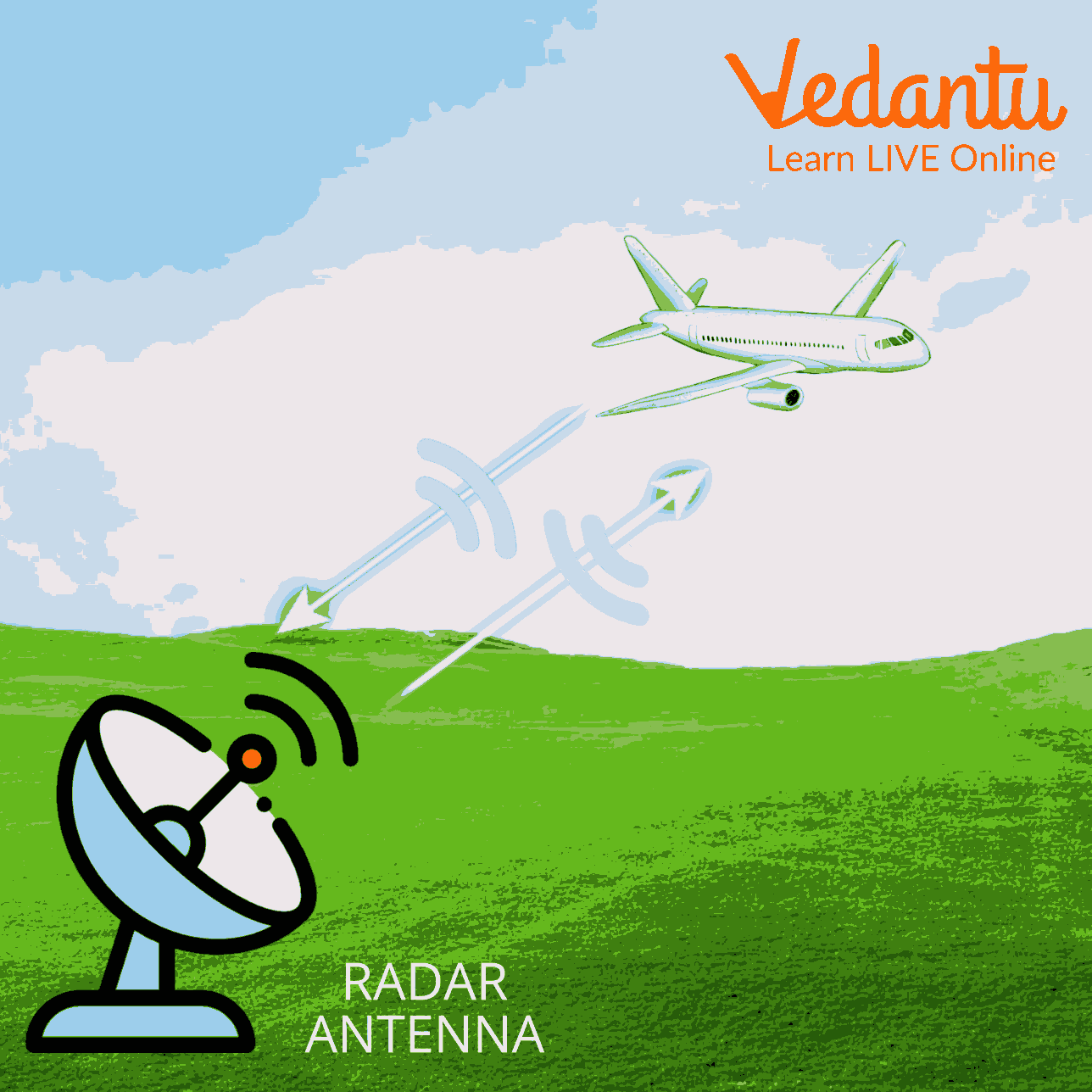




Understanding the Functioning of Radar and What It Is?
Radar is a detection system that uses radio waves to determine the distance, angle, and radial velocity of objects relative to the site. A radar system is made up of a transmitter, a receiver, an antenna and a display. The transmitter creates the radio waves; these radio waves are invisible forms of energy. The antenna sends the waves out into the air and when the waves hit an object they reflect and bounce back to the antenna. The logo of the radar is as shown in the image below.

Radar Logo
What Is Radar?
The word RADAR expands into Radio Detecting and Ranging. Radar is a device or machine that uses reflected radio waves to detect the position or movement of a person or any object. It is also used to measure the speed of automobiles. An example of radar is the device highway patrol officers use to detect those people who drive very fast on roads.

Radar Dish
Who Invented Radar?
The history of radar started with some experiments performed by Heinrich Hertz in the late 19th century. The experiments showed that the radio waves were reflected by objects of metals. However, it was not until the early 20th century that systems able to use these principles were becoming very much used. True radar such as the British Chain Home early warning system provide information about directions to objects which are over short distances. These radars were developed over the next two decades.
How Does Radar Work?
Radar has four main components:
A transmitter which creates the energy pulse.
A transmit or receive switch that tells the antenna when to transmit or receive the pulses.
An antenna to send pulses into the atmosphere and receive the reflected pulse back.
A receiver which detects, amplifies, and transforms the received signals into video format.
Let Us Understand How Radar Works
The antenna acts as a transmitter which sends radio waves through air.
Radio waves hit the target object or aeroplane and reflect back.
Antenna picks up reflected waves during break between transmissions. The same antenna acts as both transmitter and receiver.
The duplexer switches antenna to receiver.
There is a computer present in the receiver which processes reflected waves and displays them on a screen.
The target plane can be shown on screen with any other nearby targets.

Radar Working
Applications of Radar
Radar has a wide use in military operations. They are used in ground, naval and also for air defence purposes.
They are widely used to track and detect spacecraft and satellites.
Radar is used for safely controlling the traffic in air means it is used to guide aircraft for proper landing and take off when weather conditions are bad.

Weather Radar
Benefits of Radar
Radar can enter mediums like fog, snow and mists.
Radar signals can pass through isolators
They can locate an object accurately.
Radar signals do not require a medium.
Limitations of Radar
Radar has a restricted 200 ft range.
Numerous objects and mediums may interact with radar in the air.
Radar requires a substantial amount of time to set a lock on an object.
Radar can not detect multiple objects at the same time. Also, they just detect objects but not provide any solution.
Sample Questions
Question 1. What is the full form of radar?
Answer: The full form of radar is Radio Detecting And Ranging.
Question 2. How are radar used for aircraft navigation?
Answer: Weather and ground mapping radar are used in aircrafts to navigate them properly. This allows an aircraft to ensure location of obstacles that can harm the flight.
Question 3. What are the main types of radar?
Answer: There are many types of radar. Some of them are doppler radar, monopulse radar, passive radar, weather radar, continuous-wave radar, etc.
Summary
Radar is a machine which helps to detect any object or enemy aeroplane. It works by sending an electrical signal which is transmitted and then received on a screen. It has many uses like in military operations. These are also used to track satellites.
FAQs on How Does Radar Work?
1. How are radars used for space exploration?
Radars are used to detect spacecraft and satellites. They are also used to safely land spacecraft.
2. What is the principle behind the working of radar?
The basic principle behind the functioning of the radar is that extremely short bursts of radio energy are transmitted, reflected and then returned as an echo.
3. What is the maximum range of radar?
Radar has a maximum range of 128km. Its range can increase by the peak power.
4. What is meant by rest time in radar?
In radar, rest time is the time between the end of one transmitted pulse and the beginning of the next one.
5. How fast is a radar signal?
The speed of a radar signal is approximately 299.8 million metres per second. This is called its range.









